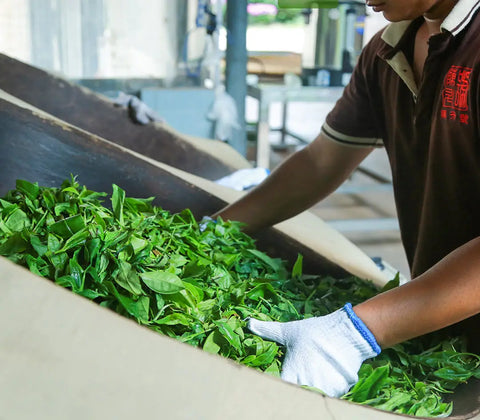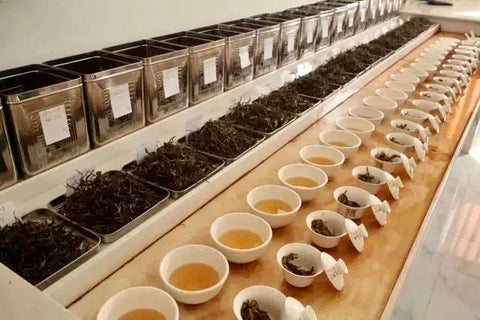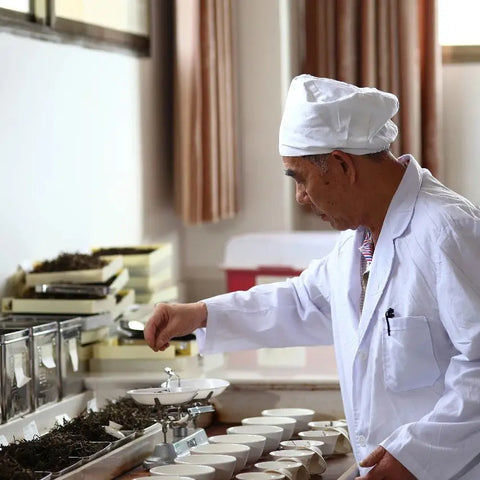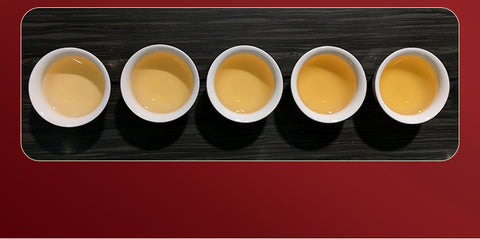Tea Concentrate
Tea concentrate is a potent solution made from brewing tea leaves to create a more concentrated form. This product allows you to enjoy tea with convenience and consistency. To prepare a cup, you simply dilute the concentrate with hot or cold water to your taste preference.
The Process:
- Steeping: Tea leaves are steeped in hot water for an extended period.
- Concentration: The tea is then concentrated by removing some of the water.
- Flavoring (Optional): Some concentrates are pre-flavored with herbs, spices, or sweeteners.
Benefits:
Bestsellers
- Efficiency: Saves time in preparation, especially for large servings.
- Consistency: Offers a uniform taste every time.
- Shelf Life: Typically longer than fresh-brewed tea.
Storage: Proper storage is essential to maintain the quality of your tea concentrate. Keep it in an airtight container in a cool, dark place, and always refrigerate after opening.
Types of Tea Concentrate:
- Black Tea: Strong and bold in flavor, often used for iced teas or lattes.
- Green Tea: Lighter and more subtle, a healthier choice rich in antioxidants.
- Herbal: A caffeine-free option that can include a variety of herbs and flavors.
Tea concentrate is versatile and can be used in various other drinks and recipes to provide a tea flavor without the hassle of brewing fresh tea each time.
Production Methods

In tea concentrate production, your primary tasks involve extracting flavors from tea leaves, concentrating the extract, and ensuring that the final product retains its desired flavors. Each step is crucial to the quality of the final tea concentrate.
Extraction Techniques
When you begin making tea concentrate, extraction is the first step. You can perform extraction through:
- Hot Water Infusion: You steep tea leaves in hot water, similar to brewing a strong cup of tea. The temperature and duration must be carefully controlled to prevent bitterness.
- Cold Water Infusion: This method takes longer but can result in a smoother flavor profile. You immerse the tea leaves in cold water and allow them to steep over an extended period.
Concentration Processes
After extraction, the tea solution needs to be concentrated. This involves removing part of the water to intensify the flavor. You can use:
- Evaporation: Under reduced pressure to prevent flavor loss, you gently heat the tea infusion until the desired concentration is achieved.
- Freeze Concentration: By freezing the infusion and then slowly thawing it, the ice (pure water) separates from the concentrated flavor compounds.
Flavor Preservation
Your final goal is to preserve the delicate flavors of the tea concentrate. Several methods can aid in this:
- Refrigeration: You should store the tea concentrate at low temperatures to slow down the degradation of flavors.
- Addition of Natural Preservatives: Ingredients such as citric acid can be added to maintain freshness and extend shelf life.
Types of Tea Concentrates

Tea concentrates offer you a convenient way to enjoy your favorite teas with consistency in flavor and strength. These concentrated versions are ideal for quick preparation and can suit various preferences.
Black Tea Concentrate
Black tea concentrate is made by steeping black tea leaves in hot water then reducing the liquid to create a potent concentrate. It provides a robust flavor that is often characterized by notes of malt or smoke. For preparation, you typically mix one part concentrate with one part water or milk.
Green Tea Concentrate
Green tea concentrate involves a process similar to black tea but using green tea leaves, which are known for their delicate flavors and potential health benefits. This concentrate retains the green tea's fresh, grassy taste and light color, and it is typically diluted with water before consumption.
Lao Ban Zhang
Herbal Tea Concentrate
Herbal tea concentrates are diverse, as they can be derived from various dried herbs, flowers, and fruits. Unlike true tea concentrates, they do not contain caffeine and offer a wide range of flavors that can range from sweet to spicy or floral. Concentration ratios vary depending on the intensity of the herbal ingredients used.
Chai Tea Concentrate
Chai tea concentrate combines black tea with a hearty blend of spices like cinnamon, clove, cardamom, and ginger. The resulting brew is rich and fragrant, meant to be mixed with milk or a milk alternative to create a creamy chai latte. The spice level can be adjusted to suit your taste preferences.
Applications
Tea concentrate offers versatile applications across various industries and homemade preparations. It serves as a convenient base for a range of products and culinary creations, allowing you to streamline processes and enhance flavors.
Commercial Beverage Production
Tea concentrates are widely used in the beverage industry for manufacturing ready-to-drink (RTD) teas. These concentrates enable you to produce large quantities with consistency in flavor and strength.
- Standardization: Central to commercial beverage production, tea concentrates ensure that each batch of RTD tea maintains uniform taste and quality.
- Efficiency: Using concentrates, production lines can operate faster, bypassing the brewing stage, which results in higher efficiency and output.
Culinary Uses
Tea concentrates are a staple in kitchens for adding unique flavors to an array of dishes.
- Desserts: Chefs incorporate tea concentrate into recipes for cakes, custards, and glazes, infusing them with distinctive tea notes.
- Savory Dishes: It can be used as a marinade base or flavoring agent in sauces, adding depth to the dish's overall flavor profile.
Home Preparation
Tea concentrate is ideal for personal use due to its simplicity and convenience.
- Quick Beverages: You can create iced teas or hot teas at your desired strength without the traditional brewing wait time.
- Customization: At home, the concentrate allows you to tailor the intensity and sweetness of your tea beverages to your personal taste, giving you control over the end product.
Benefits and Uses

Tea concentrate offers a range of advantages that cater to your convenience and practical needs. Here's how you can benefit from it and how to utilize it effectively.
Convenience Factor
Tea concentrate allows you to prepare your favorite beverage quickly and efficiently. You simply mix the concentrate with hot or cold water, and your tea is ready. This means less time steeping and more time enjoying your drink.
Shelf Stability
The concentrated form of tea is less perishable than fresh tea leaves. When stored properly, its shelf life can extend significantly. You won't have to worry about your tea degrading quickly, which is especially useful if you don't consume it daily.
Versatility
You can exploit the adaptability of tea concentrate in various ways:
- Drinks: Mix it into hot water for a traditional cup, or blend it with cold water and ice for a refreshing iced tea.
- Cooking: Incorporate it into recipes for a unique flavor, such as in sauces or marinades.
- Customization: Experiment with strength by adjusting the amount of concentrate you use, personalizing your tea experience to your taste preference.
Packaging and Storage
When selecting packaging for your tea concentrate, opt for airtight containers to preserve freshness and prevent oxidation. Glass bottles are a popular choice as they do not transfer any unwanted flavors to the tea.
For long-term storage, consider the following:
- Refrigeration — Store your tea concentrate in the refrigerator immediately after opening. This slows down the degradation process.
- Size — Use smaller bottles if you consume tea concentrate infrequently to avoid repeated exposure to air.
Here’s a quick guide on storage durations:
| Storage Condition | Suggested Duration |
|---|---|
| Room Temperature | Until the “best by” date |
| Refrigerated (opened) | Up to 10 days |
| Frozen | Up to 6 months for best taste |
Follow these simple steps to ensure your tea concentrate retains its quality:
- Seal the container tightly after every use to limit the exposure to air.
- Store in a cool, dark place if unopened and away from direct sunlight to prevent heat damage.
- Label your tea concentrate with the date of opening to keep track of its freshness.
Remember, the taste and quality of your tea concentrate significantly depend on how well you store it. HANDLE WITH CARE!
Quality Assessment

When assessing the quality of tea concentrate, it is important to consider color and clarity, taste profile, and aroma. Each attribute plays a substantial role in the overall quality.
Color and Clarity
The appearance of tea concentrate can be a clear indicator of its quality.
- Color: You're looking for a color that is true to the tea variety. For example, a black tea concentrate should be a deep amber to reddish-brown, whereas green tea concentrate might appear more pale and yellow-green.
- Clarity: A high-quality tea concentrate should be clear without cloudiness or sediment. Any haze or particles can indicate improper brewing or storage.
Taste Profile
The flavor of tea concentrate is a critical quality attribute. Here you'll assess two main components:
- Sweetness: Tea concentrates vary in sweetness. Note if the sweetness level aligns with what's expected of the tea variety.
- Bitterness: While bitterness is intrinsic to tea, excessive bitterness can suggest over-extraction or poor-quality tea leaves.
Remember that balance is key for a pleasant taste profile.
Aroma
The aroma of tea concentrate can greatly influence your perception of its quality.
- Freshness: A fresh tea concentrate will have a vibrant and easily detectable aroma, true to the tea type.
- Complexity: High-quality concentrates should offer a complexity of aromas, from floral to earthy notes, depending on the tea variety.
Market Trends
In recent years, you've likely seen a steady increase in the demand for tea concentrate. This surge is attributed to the growing interest in health-conscious and convenient beverage options. The global market reflects this change, with a significant push towards more natural and organic products:
-
Consumer Preferences: A shift towards organic and wellness-oriented lifestyles has bolstered the market for tea concentrate. You're choosing products that are perceived as healthier and more natural, which tea concentrate offers in a convenient form.
-
Distribution Channels: The expansion of online retail has significantly impacted your accessibility to tea concentrate. You can now easily purchase a variety of tea concentrates from online merchants, leading to an increase in sales through e-commerce platforms.
-
Innovation and Variety: Manufacturers are catering to your diverse palates by introducing an array of flavors and blends, including herbal, fruit-infused, and spiced tea concentrates. These innovations are a direct response to your evolving taste preferences.
Here's a snapshot of the current market players and their offerings:
| Brand | Product Lineup | Price Range |
|---|---|---|
| Tea Masters | Classic, Chai, Jasmine | $$ - $$$ |
| PureLeaf | Unsweetened, Raspberry, Lemon | $ - $$ |
| HerbalBrew | Organic Tulsi, Ginger-Lemon, Hibiscus | $$$ |
Catering to your preference for sustainability, some of these brands are also highlighting eco-friendly packaging and fair trade sourcing practices. Your awareness of environmental issues is, therefore, shaping the market significantly.
In summary, the market for tea concentrate is being driven by your preference for healthy, organic options, the convenience of e-commerce, and a broadened product range.
Regulatory Considerations
When producing and distributing tea concentrate, you must comply with food safety regulations. These regulations ensure the safety and quality of food products, and they can vary by region.
In the United States, the Food and Drug Administration (FDA) oversees food safety standards. Your tea concentrate must meet the requirements outlined in the Current Good Manufacturing Practice, Hazard Analysis, and Risk-Based Preventive Controls for Human Food. Below is a brief checklist for your reference:
- Ingredient Sourcing: Ensure all ingredients meet safety standards.
- Facility Inspection: Your production facility must pass regular FDA inspections.
- Labelling: Accurately label your products, including nutritional information and potential allergens.
- Reporting: Report any food safety incidents promptly as required by the FDA’s Reportable Food Registry.
In the European Union, you are governed by the European Food Safety Authority (EFSA). The key regulations involve:
- Traceability: Maintain records of the product’s entire supply chain.
- Food Hygiene: Adhere strictly to EU hygiene requirements.
- Nutrition and Health Claims: Any claims on your labelings, such as health benefits, must be substantiated and approved.
Here's a quick glance at the major aspects you should focus on:
| Category | Focus Area |
|---|---|
| Ingredient Sourcing | Safety and compliance with regional standards |
| Facility Inspection | Adherence to good manufacturing practices |
| Labelling | Transparency and accuracy in product information |
| Reporting | Prompt incident reporting and transparency |
Ensure you are aware of and complt with local food safety laws and export requirements if you intend to distribute your tea concentrate internationally.
← Older post Newer post →











